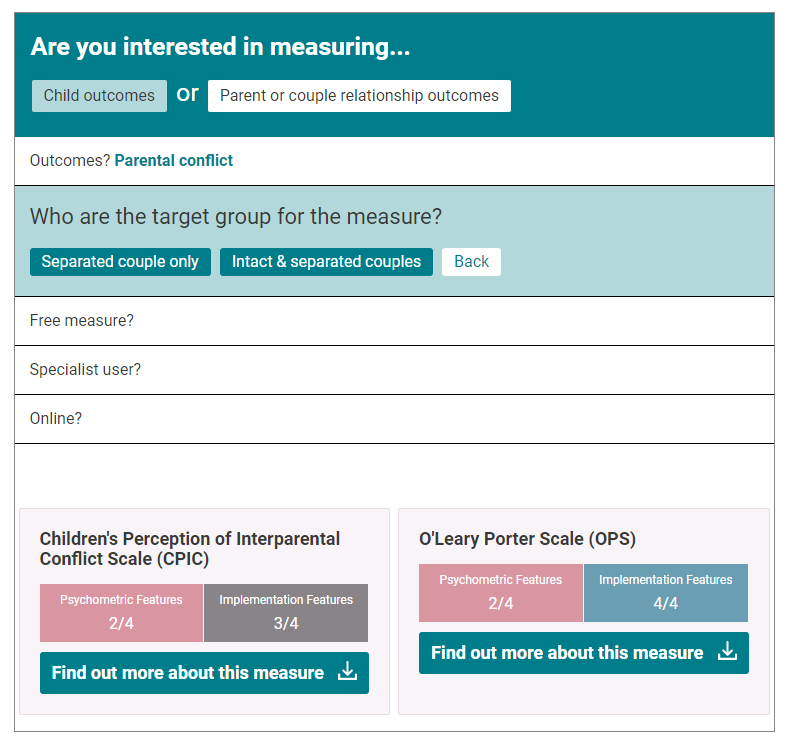Blog
Choosing the right measurement tool
EIF senior research officer Virginia Ghiara introduces new EIF resources to help you choose between the many and varied validated tools that might be used to measure parental conflict and its impact on children.
Earlier this year, EIF Healthy Relationships Week brought together local leaders and relationship support organisations to celebrate the progress made in improving outcomes for children by tackling conflict between parents. Throughout the week, the importance of impact kept coming up as a crucial point: local leaders wanted to know if their responses to the pandemic were making a real difference, and more broadly if their support was improving the lives of children and their families.
We know that it can be difficult to understand if an intervention has worked, and if so, by how much. We all hope to come across the perfect tool to gauge the impact of an intervention, one that is not only valid and reliable, but also measures exactly what we want to measure, and which supports engagement. The reality, however, is that standardised outcome measures are often designed to measure very specific and narrow factors, and each one has distinct strengths and limitations.
Weighing up these strengths and limitations, moreover, is not enough. There are a number of other factors to consider when deciding what measurement tool is best for your situation, such as the anticipated outcomes of your intervention, the resources available, and the participants you are seeking to reach. In the world of reducing parental conflict, for example, a common challenge experienced by local areas is finding a validated outcome measure that can be used with both intact couples and separated parents.
Even the measures that best suit your needs are likely to have some features that you might want to change, if you feel there is inappropriate wording or an unwieldy set of items. When we speak to colleagues who are using outcome measures, they often describe how they have been tempted to change some questions or shorten the tools they use. Changing the wording might seem like a sensible decision, for example, when working with teenage parents, as most validated measures have not been developed with that population in mind. As tempting as these ideas may be, however, modifying a validated measure may compromise its ability to detect changes accurately and reliably.
While we can all agree that finding the right measure is not straightforward, at EIF we have developed some new tools that can support this decision. We have reviewed a selection of some of the most relevant and frequently used outcome measures that can tell us about the impact of interventions on harmful conflict between parents, the quality of parent couple relationships, and improvements in outcomes for children as a result. We have updated the RPC outcomes framework to include definitions of the child outcomes and risk factors that currently make up the framework, and some measurement tools that are used to assess them.
Now, we have built a new interactive tool, the RPC Measures Selector, to help you sift through this selection of measures. By answering a few simple questions, you can identify which of the measures we have assessed are most likely to suit your requirements.
We have also recently published a new practical guide that provides examples of solutions to help you address some of the common issues without compromising the properties of your selected measure.
At EIF, we are supporting a number of local areas to explore which tools they could use to measure the effects of their couple relationship support, and we will publish some case studies in the spring. In the meantime, please do get in touch if you have experience and insights on measurement, or would like to share your feedback on how these new EIF resources are working for you.

